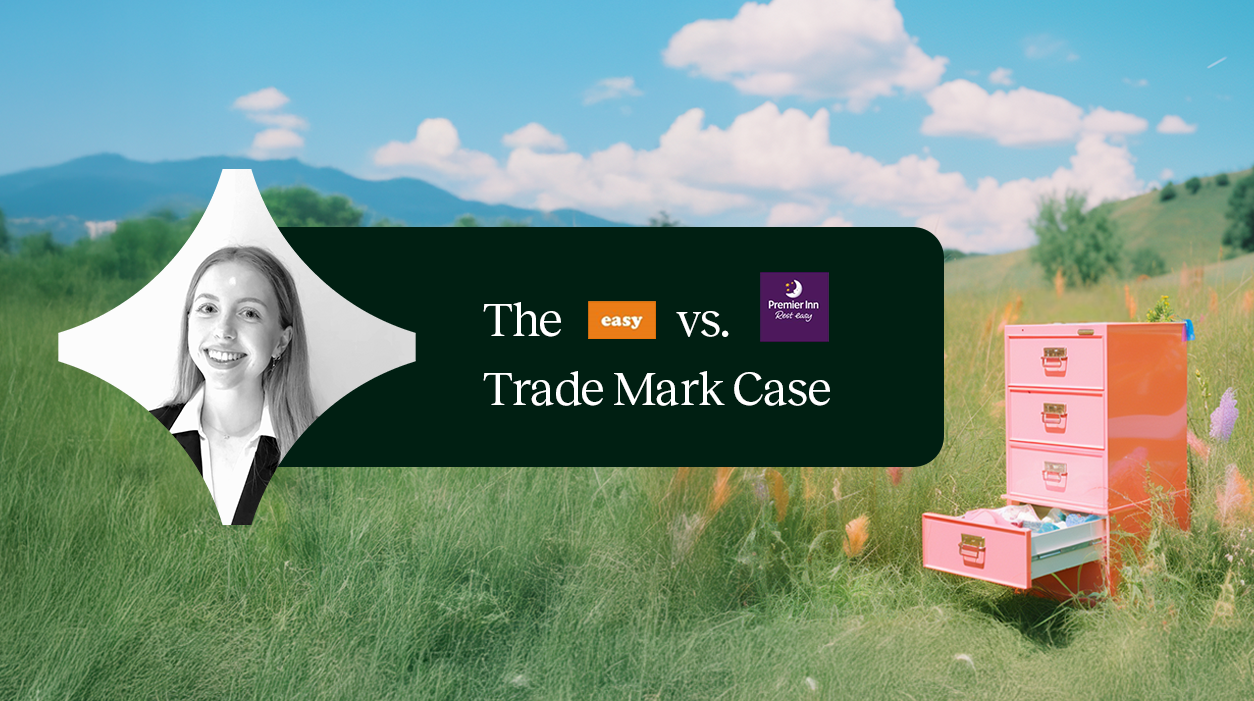Family Feud: When the ‘Family of Trade Marks’ Falls Apart
- Firstpage
- Legal Case Files

The level of protection afforded to a “family” of trade marks was addressed by the UK High Court in easyGroup Ltd v Premier Inn Hotels Ltd [2025] EWHC 2229 (Ch), a case brought by easyGroup Ltd against Premier Inn Hotels Limited for trade mark infringement under Section 10(2) and 10(3) of the Trade Marks Act 1994.
A Previously Defended Position Reconsidered
The case concerned the holding company easyGroup, which has gone to great lengths over the years to protect its rights in “easy”, arguing that it owns the rights to a “family” of trade marks under the “easy” brand, including easyJet, easyHotel, easyCar and easyBus (referred to as the “easy travel family”).
In fact, they managed to defend this position successfully in previous cases. They established a precedent in favour of this family of “easy” trade marks, for example, in W3 v. easyGroup [2018] EWHC 7 (Ch), where Arnold J (as he then was) endorsed the “family” doctrine and its potential to increase the likelihood of confusion:
“Where it is shown that the trade mark proprietor has used a “family” of trade marks with a common feature, and a third party uses a sign which shares that common feature, this can support the existence of a likelihood of confusion.”
W3 Ltd. v. easyGroup Ltd. [2018] EWHC 7; [2018] ETMR 40
However, the recent case of easyGroup Ltd v Premier Inn Hotels Ltd [2025] EWHC 2229 (Ch) threw all this into question. This case involved an alleged infringement of easyGroup’s rights in the word “easy” by the hotel chain Premier Inn, which had been using the tagline “Rest easy” both as a standalone phrase on its website and in combination with its Premier Inn logo. The scope of protection available to proprietors of family marks was discussed.
Case Details
The case involved two separate claims under Section 10(2) and 10(3) of the Trade Marks Act 1994:
1. The initial claim of 5 September 2023 under s10(3) (reputation + unfair advantage) for infringement of the following marks owned by easyGroup:
- the series mark “EASYHOTEL” and “easyHotel” (the “easyHotel UKTM”)
- the series mark: (the "easy UKTM")
2. The claim was amended in March 2024 to include an additional claim solely under s.10(2) (likelihood of confusion), for infringement of the following mark, which had been acquired by easyGroup by assignment in January 2024:
- word mark REST EASY APARTMENTS (the “Rest Easy Apartments UKTM”)
The two separate infringement claims set out above were directed towards the following use by Premier Inn:
- Series Mark - Registered UKTM: (the "Premier Inn UKTM")
- Additional use:and REST EASY (the "Premier Inn Rest Easy Device")
In addition, easyGroup claimed not only infringement under s10(2) and 10(3), but also claimed that Premier Inn’s UKTM should be invalidated on the grounds of s5(2) and 5(3), for the same grounds as s10(2) and 10(3) respectively.
Family of Marks – Conflating the Family of Marks Doctrine With Reputation Under Section 10(3)
As it turned out, easyGroup expressly disavowed any intention to rely on the family of brands doctrine at the case management conference, which meant they were unable to do so later on. Without the family of brands argument at their disposal, easyGroup sought instead to rely on the reputation of the “easy-” family, particularly the mark “EASYHOTEL” and “easyHotel” for goods/services relating to travel. However, the claims for infringement based on both 10(2) and 10(3) were unsuccessful and it was found there was no infringement by Premier Inn. Similarly, the corresponding invalidity claims were unsuccessful.
It transpired that despite their initial disavowal of the “family of marks” doctrine, easyGroup attempted to rely on it nonetheless in the form of a claim for reputation of “easy”, albeit unsuccessfully. In reference to easyGroup’s attempts to prove reputation, the judge stated: “…[T]his is actually a family of marks argument, directed at establishing reputation for the purposes of the s.10(3) claim.”(para 187)
Seemingly unimpressed by this “back-door” attempt to use the family of marks argument, the judgment was instead focussed on the merits of the claim in the context of of the individual trade marks, rather than the “easy Travel Family” at large. As such, the judge considered reputation of the “easyHotel” mark to be established only in relation to hotel accommodation and temporary accommodation, and not in relation to travel services generally.
The judge did not accept that there was sufficient evidence to prove reputation of “easyHotel” for “reservation services for hotel accommodation; computerised hotel reservation services”. (para 132)

Whilst easyGroup submitted evidence of reputation for the entire “easy® family” across several market sectors, the judge questioned the relevance of the evidence submitted as it did not show use for “easy” solus. Furthermore, some of the evidence covered unrelated goods and services, for example key rings, pens, paper notebooks, marketing services, social media – none of which show use of “easy” solus or “easyHotel”, but instead refers to the “easy ® family of brands”.
This did not prove the reputation of the relevant marks in the context of the appropriate hotel services. (para 139-143)
The judge expresses a general aversion to affording a broad protection to the “easy” family over a wide range of goods/services:
“To hold that a trade mark could obtain reputation and enhanced distinctiveness in particular services because of an association with trade marks sharing some similarity, but registered for and/or trading in different services would be to extend the protection given by trade marks well beyond the protection provided for under statute.” (para 189.)”
This ruling draws a distinction between proving the reputation of the word “easy” and proving that easyGroup enjoys protection for the family of “easy-” brands – one cannot be inferred from the other.
Specifically, it seems the threshold for proving reputation under 10(3) is higher than that of the family of marks doctrine: Reputation must be proven over the specific services in question, whereas the judge appeared to criticise the vague nature of the family of brands doctrine, which, in theory, could protect any and all services covered by the “family members”. It risks extending trade mark protection beyond the specific market where reputation has been proven.
Distinctiveness
Enhanced distinctiveness for “easyHotel” had only been established when in use on a white script on the orange background (at para 132-3). Visually, this is unlike Premier Inn’s use of the colour purple. Overall, there was not sufficient reputation or enhanced distinctiveness to support a claim of infringement.
Premier Inn’s use of the plain text “REST EASY” on their website, as opposed to when it appears on their Premier Inn logos, was used as marketing copy rather than as a trade mark and as such, it was disregarded from the assessment of trade mark infringement.
Even if there were to be reputation or enhanced distinctiveness of “easy” solus, this would not necessarily extend to circumstances where “easy” is accompanied by other elements. There was no inherent distinctiveness for “easy” alone.
The judge also differentiated the perceived meaning of “Rest easy” vs “easy”:
“Even if easyGroup did somehow have exclusivity in the use of the word “easy” within the hotels sphere, the use by Premier Inn of that word only in the phrase “Rest easy” would not, in my judgment, dilute the word “easy” when used alone. “easy” and “Rest easy” do not mean the same thing and the average consumer would not understand them to mean the same thing, let alone in the context in which they were being used.” (para 219)
Likelihood of Confusion – Section 10(2)
On likelihood of confusion, the judge distinguished the present case from the precedent of the CJEU in Medion AG v. Thomson Multimedia Sales Germany & Austria GmbH (C-120-04) [2006] ETMR 13, where “THOMSON LIFE” did infringe Medion’s mark “LIFE”, as the earlier mark “LIFE” was wholly incorporated within it.
Unlike the present case, the judge explained that the “LIFE” decision involved identical goods and the reproduction of the entire earlier registered trade mark. In addition, the likelihood of confusion in the context of a global impression must still be taken into account. (para 98-99). Importantly, the judge was considering only the mark “REST EASY APARTMENTS” for this assessment of likelihood of confusion, given that the two claims for infringement under Section 10(2) and 10(3) were based on separate grounds, as explained above.
As easyGroup’s earlier mark was not reproduced in its entirety by Premier Inn, and there was an additional moon device, the overall impression was different and there was no infringement.
Conclusion
This case highlights the need for preparedness when assessing the grounds to rely on for infringement. By splitting their claims into separate cases for 10(2) and 10(3), relying on separate earlier marks, easyGroup may have weakened its position somewhat. It also appears that easyGroup would have had a slightly higher likelihood of success had they gone down the “family of brands” route from the outset, rather than initially disavowing the doctrine only to indirectly rely on it later on via reputation.
Nonetheless, it is not certain that they would have succeeded on that basis, as even with the family of marks doctrine, the threshold to prove that the public would form an association between the individual marks of the trade mark family would be high, particularly where they cover dissimilar goods/services. Even then, the court must still assess whether confusion is likely in a global context. The judge’s remarks on reputation confirm that reputation for one mark within the “family of trade marks” does not necessarily spill over to the remaining family members.
All in all, this case demonstrates that the scope of protection for a ‘family of trade marks’ is limited, and although easyGroup has expressed an intention to appeal, they may need to rethink their approach in the event that they are unsuccessful.
Photo credit
Case decision from judiciary.uk (logotypes).

Contact us
Do you want consulting, advice or are interested in any of our legal services? Contact us and we will help you!





